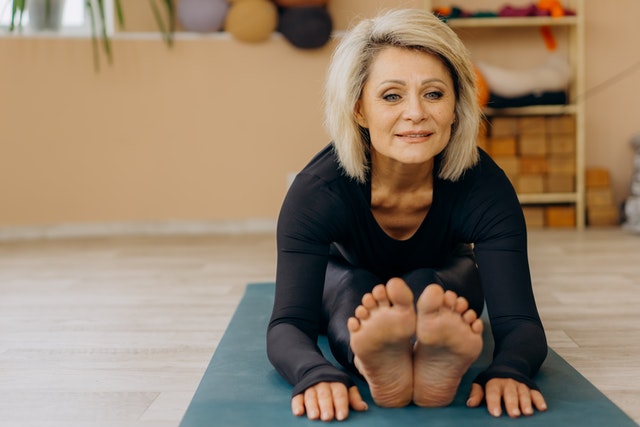In our podcast episode with Carol Simpson, she talks about dynamic and static stretching. She commented that you often see runners at the beginning of a race doing static stretches when they should be doing dynamic stretches.
Shortly after that episode, I went to my gym and they had a flyer out entitled Flexibility Guidelines for Seniors. I really hate applying guidelines for seniors to me but there was some useful information, mainly describing the differences between dynamic and static stretching.
Dynamic Stretches
Dynamic stretches involve movement. You move your joints and muscles so they go through a full range of motion. These stretches should be done before a workout to warm up the muscles.
Sometimes dynamic stretches are movements that mimic the movement of the exercise. That’s why you see swimmers circling their arms before a swim or golfers imitating a golf stroke without the club.
Dynamic stretches are about movement and the stretches are not held for any length of time.
Some examples of dynamic stretches are:
- Hamstring sweeps
- Arm circles
- High knees
- Jumping jacks
- Side shuffles
Because the function of dynamic stretches is to warm the muscles, these are not the stretches to do after a workout. That’s when you want to use static stretching.
Static Stretches
Static stretches are when you stretch a muscle to its furthest point. You hold this position for a period of time. You might hold a stretch anywhere from 10 seconds to 60 seconds.
Static stretches are usually performed after a workout when your muscles have been warmed up. These stretches help to stretch out those worked muscles.
Some examples of static stretches are:
- Toe Touches
- Knee to chest
- T-spine rotation
Basically, name a body part and stretch it. You can do a neck stretch, a triceps stretch, a quads stretch. Any of these things help the worked muscles. The static stretches help you recover from your workouts.
Let me know what stretching you like to do.
